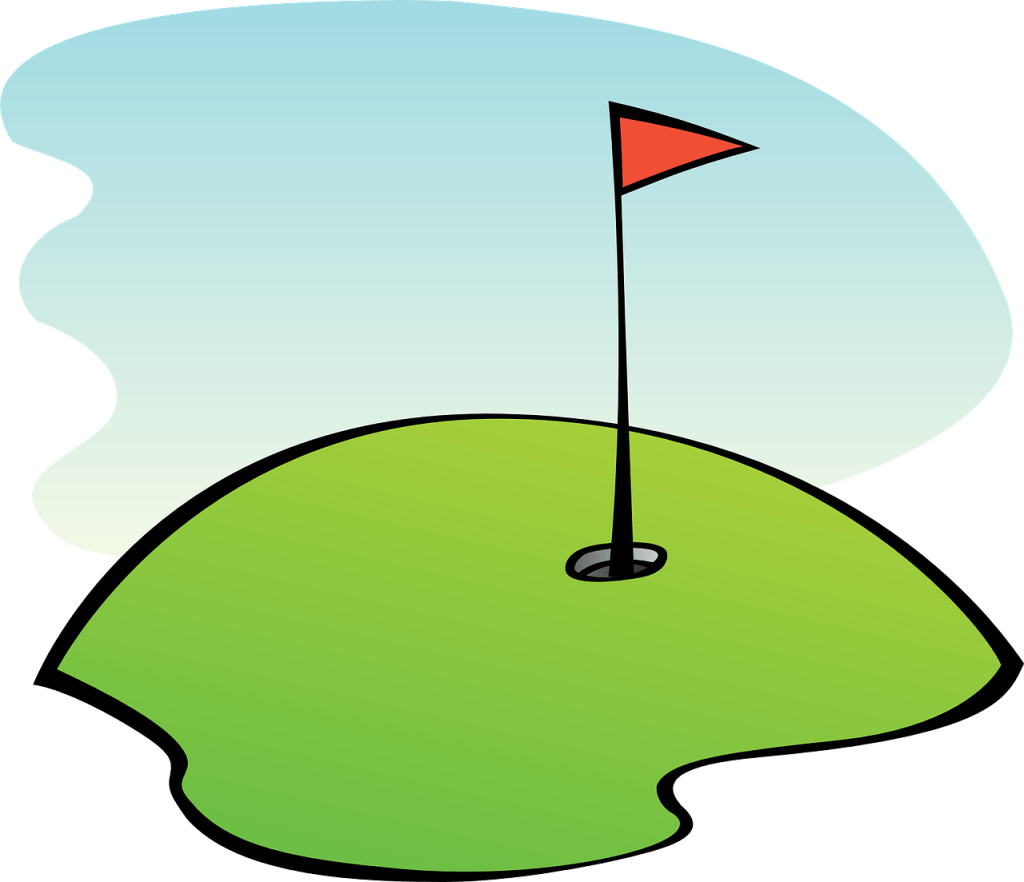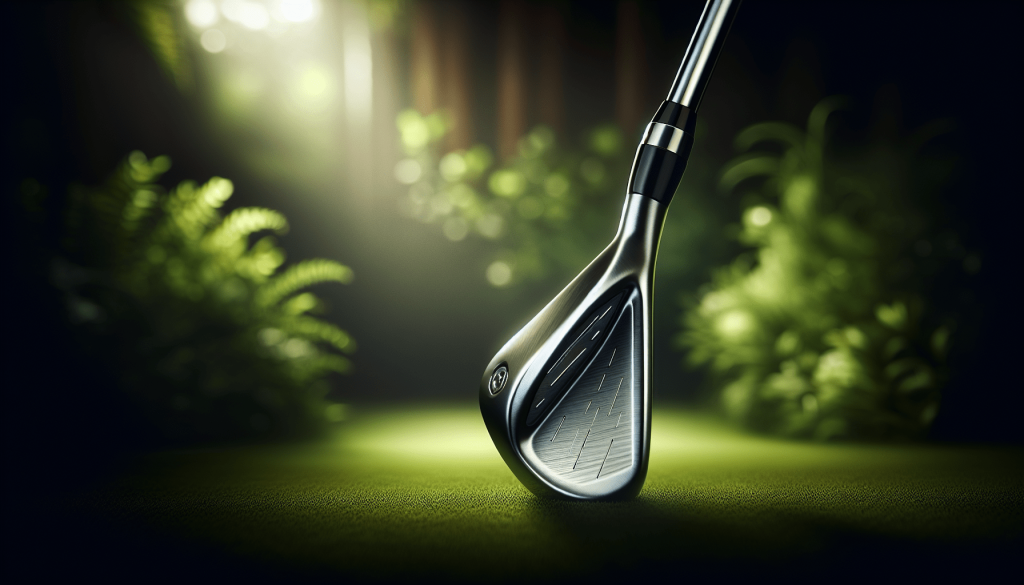Have you ever wondered what the optimum side view setup for a golf iron looks like?
Understanding the subtleties of your golf iron setup, particularly from the side view, can significantly enhance your game. Attention to detail about how you position yourself, the angle of the club, and your stance can make a world of difference in your swing. The side view holds particular importance as it reveals the underlying mechanics at play. This analysis will guide you through essential considerations for achieving the perfect setup.

Understanding the Basics of Golf Iron Setup
To master your golf iron setup from the side view, it’s essential first to comprehend the fundamentals. The golf swing is a complex motion, but with the proper groundwork in place, it becomes more manageable. The role of setup cannot be overstated; it’s the foundation upon which your entire swing is built.
The Importance of a Proper Setup
Why is setup so critical in golf? A perfect setup aids in consistency, allowing for repeated execution of the desired movement. A consistent stance and posture allow for better control, more accurate shots, and an overall improved game. Without a solid setup, your swings become erratic, leading to inconsistent results.
Elements of the Setup
Several components make up the golf iron setup from a side view: grip, stance, posture, alignment, ball position, and clubface positioning. Each plays a critical role in your ability to transfer power efficiently and hit the ball accurately. Understanding each component is crucial to refining your overall performance.
Analyzing Your Side View Setup
Evaluating your setup from the side reveals crucial insights into your swing mechanics. This view allows us to assess posture, spine angle, and arm positioning, all of which contribute to the efficiency of your swing. The side view acts like a diagnostic tool, pinpointing areas of strength and those needing attention.
The Role of Spine Angle
A critical aspect of your setup when viewed from the side is your spine angle. Maintaining the correct spine angle is essential, promoting balance throughout the swing. Ideally, your spine should tilt slightly forward from your hips, fostering alignment that maximizes the club’s path.
Position of the Arms
From a side view, your arms should appear relaxed but controlled, hanging down naturally. The angle at which they hang will affect your club path, impacting the ball’s trajectory. Your elbows should not be locked; a slight bend allows for fluid motion and better control.
Crafting the Ideal Stance
Stance is a cornerstone of your setup that serves as the physical foundation for your swing. It determines your balance and ability to transfer energy into the ball efficiently.
Feet and Shoulder Alignment
From a side view, your feet should be shoulder-width apart, promoting stability. This stance gives you a solid base from which to generate power. Additionally, your toes should point slightly outward, encouraging a fluid rotation throughout your swing.
Weight Distribution
Proper weight distribution is significant in maintaining balance. Ideally, your weight should be evenly distributed between both feet, sitting slightly towards the balls of your feet rather than on your heels. This distribution allows for a natural shift during the backswing and the follow-through.
Perfecting Your Posture
Posture is a crucial element that dictates much about the potential success of your swing. It intertwines with other elements to dictate the functionality and effectiveness of your setup.
Maintaining a Neutral Spine
A neutral spine ensures you are neither hunched nor overly arched. This posture enables a full and unencumbered swing. A poor posture could lead to inefficient swings and potential strain or injury over time.
The Role of Flexed Knees
Flexing your knees slightly enhances balance and readiness for the swing. This action aids in maintaining a consistent swing plane, contributing to improved accuracy.
Aligning Your Body and the Ball
Alignment forms the roadmap for your ball’s flight path. Ensuring proper alignment guarantees that your swing path stays consistent from setup through impact.
Parallel Alignment with Your Target
From the side view, imagine a line from your shoulders, hips, and feet running parallel to your intended target line. This alignment promotes directed energy transfer through the ball toward your intended target.
Consistent Ball Position
Ball positioning can deeply influence your trajectory and contact quality. Proper positioning ensures the club strikes the ball optimally, enhancing accuracy and consistency. Usually, the ball should be positioned just ahead of the center of your stance for shorter irons, moving slightly forward as the club lengths increase.
Gripping the Club with Precision
Grip is your connection to the club and affects control and feel. An examined grip from the side view shows how securely yet naturally you hold the club.
Identifying Grip Styles
Several grip styles exist, such as the overlapping, interlocking, or ten-finger grip. Each style serves different comfort levels and control perceptions, and examining these from the side helps ensure the grip remains consistent throughout the swing.
Pressure and Positioning
Grip pressure should be firm yet not tense, enabling control without muting the sensations needed for feedback. The V formed between your thumb and forefinger should point toward your rear shoulder, promoting stability.

Clubface Angle and its Impact
The clubface’s angle at setup directly influences the ball’s initial flight direction. From a side perspective, one can appraise how square the clubface aligns with the intended target.
Achieving a Square Clubface
A square clubface is perpendicular to your target at impact, crucial for straight shots. Practicing with alignment aids or visual markers can help in perfecting this aspect of your setup.
Refining Your Setup through Practice
Consistent practice is the only way to effectively refine and internalize a proper setup. While understanding these technical elements is fundamental, integrating them into muscle memory is critical for performance on the course.
Drills to Improve Setup
Drills focusing on alignment, grip, and posture can be beneficial. Regularly using mirrors or video recordings allows for a visual check of your form, ensuring that all aspects align with your learned principles.
Routine and Repetition
Establishing a pre-shot routine ensures that you approach every shot with the same consistency. Repetition not only builds comfort but confidence in your ability to perform.

Addressing Common Setup Mistakes
Even seasoned golfers can fall into certain pitfalls regarding their setup. Recognizing and correcting these common errors is key to progression.
Overlooking Alignment
A leading mistake is improper alignment, as it disrupts energy transfer and accuracy. Regular checks and practice can eliminate this error over time.
Incorrect Spine and Arm Position
Failing to maintain the correct spine and arm position leads to compensatory movements. These unintended movements can skew the club path, leading to mishits.
Excessive Tension in Grip
A too-tight grip can result in a stifled swing. Remaining conscious of maintaining a relaxed yet firm hold promotes fluid motion.
The Psychological Edge of a Consistent Setup
Beyond the physical advantages, a consistent and deliberate setup affords you a psychological edge. Approaching each shot with confidence results from trusting your setup and swinging naturally, free from doubt.
Building Confidence
Each time you address the ball with the proper setup, you build incremental confidence in your abilities. This preparedness translates directly into more consistent execution on the course.
Conclusion
Achieving a perfect golf iron setup side view demands attention to detail and mindful practice. By focusing on your spine angle, arm position, and overall alignment, you lay the groundwork for success in your swing. Whether you’re a novice or an experienced player, refining these underpinnings of your game can lead to significant improvements. Embrace the process with consistency and patience, and you will likely see positive changes reflected in your performance on the course.

Ed Baucom is a passionate and dedicated golfer with years of experience both on and off the course. Known for his insightfulness and attention to detail, Ed brings a wealth of knowledge to the golfing community, particularly through his reviews for Golf Aid Advisor. His expertise in evaluating golfing equipment, training aids, and techniques has made him a trusted voice for golfers seeking to improve their game. Whether testing the latest clubs or offering advice on swing mechanics, Ed’s thoughtful and practical assessments help players of all skill levels enhance their performance.

